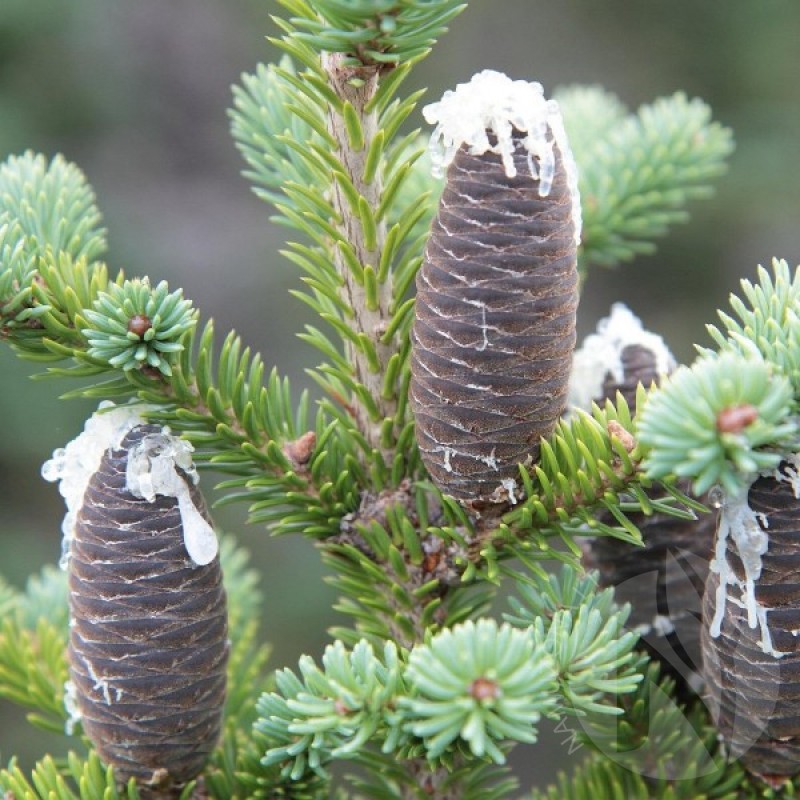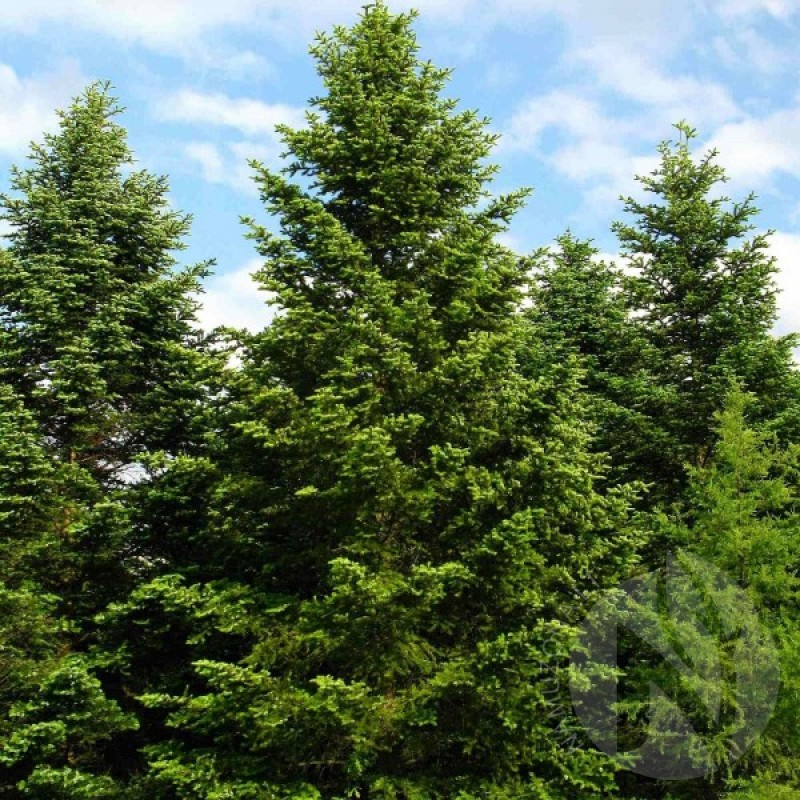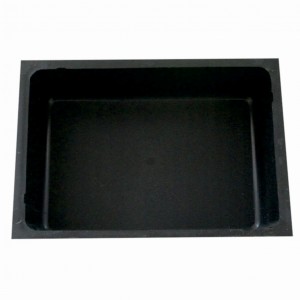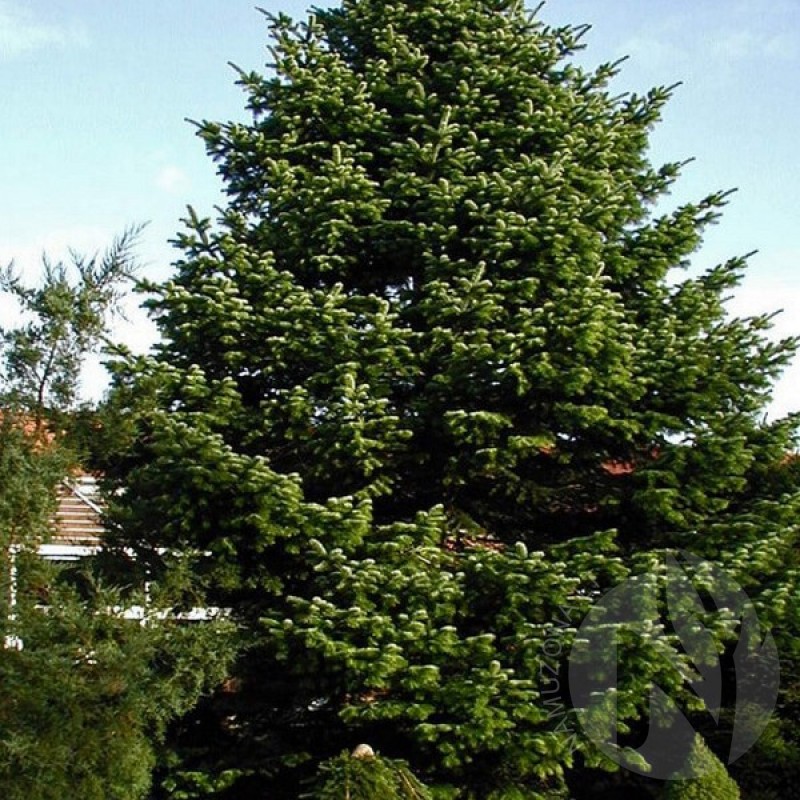
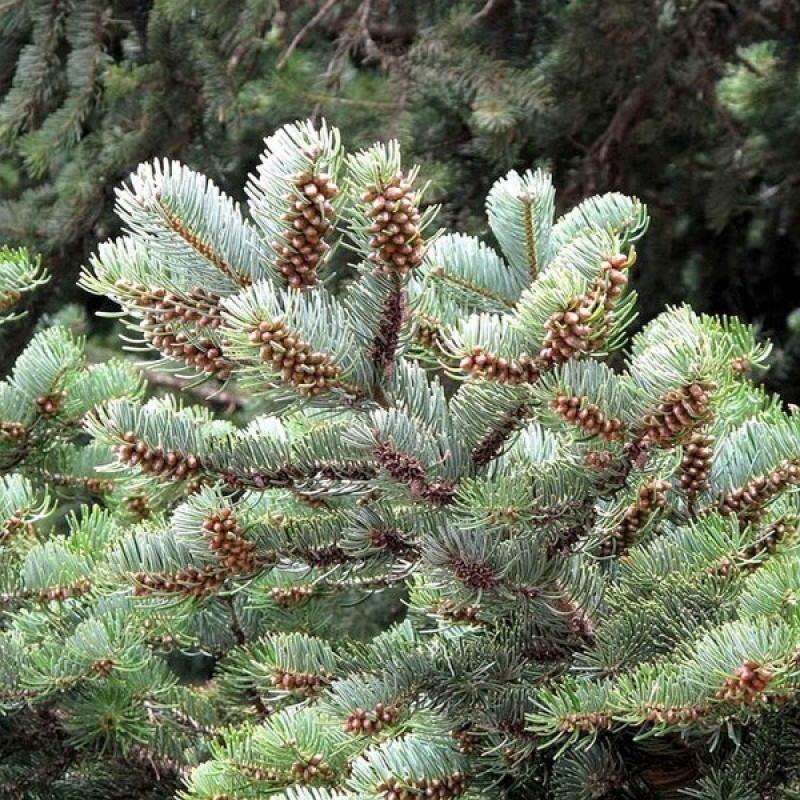
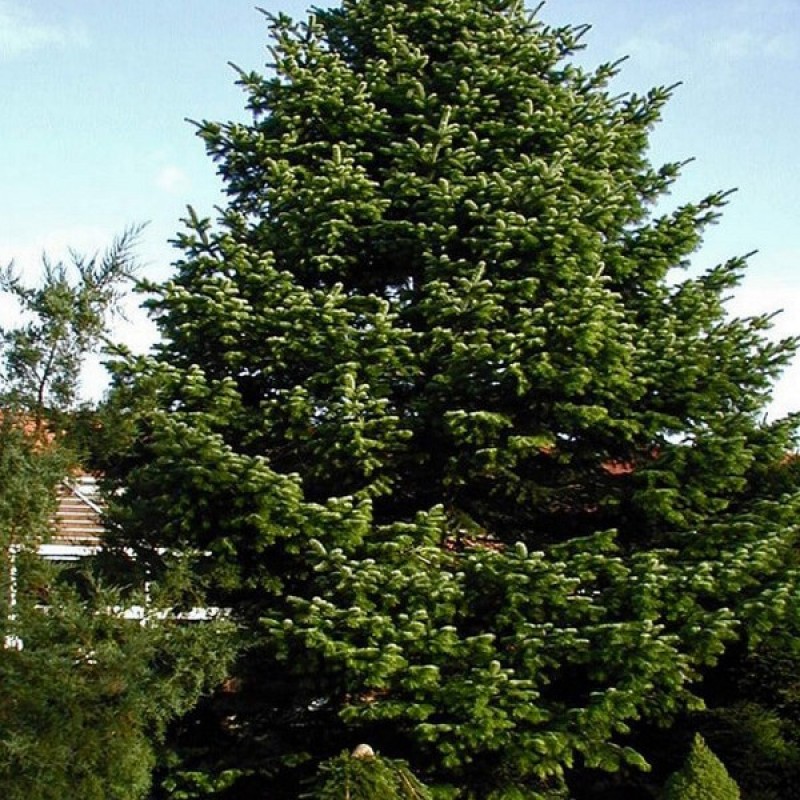
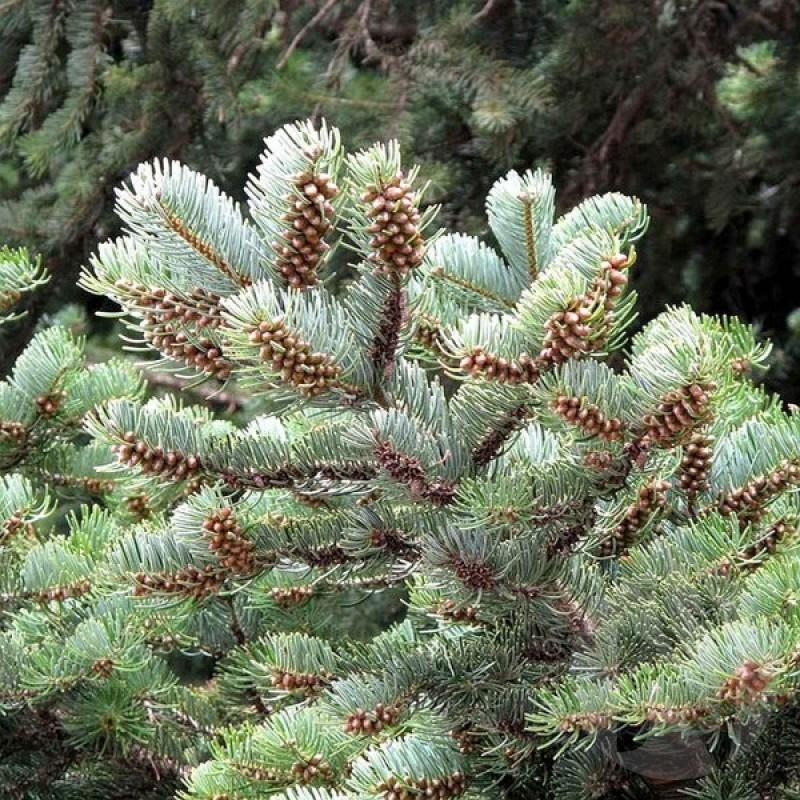
PAY ATTENTION!
All seeds (except SOLD OUT) are available for immediate shipping and will be dispatched within 1-2 business days.
INFORMATION NEEDED? PLEASE CONTACT US NOW!
Rare in cultivation but occurring naturally only in a small area of northwestern Turkey, Bornmueller's fir has a controversial identity. While some taxonomists consider it nothing more that a variant of the Caucasian or Nordman's fir (Abies nordmanniana), others think it arose from the natural hybridization of the Nordman's fir with the Greek fir (A. cephalonica). Regardless of origin, this pyramidal but narrow evergreen tree demonstrates increased tolerance to heavier textured soils than most other fir species.
The gray-brown bark is smooth but with resin blisters, showing some bark plates when the tree attain great age. The horizontal branches radiate uniformly and symmetrically from the bole. Branchlets are densely covered in rich green needles that turn deeper green with a hint of black. Needles also grow slightly upward on the branches and are heavily perfumed when crushed. Female cones are oblong and mature to dark reddish brown.
Grow Bornmueller's fir in full sun to light shade in any moist but well-drained soil, including clays that are slightly alkaline in pH. Difficult to find in the nursery trade, it's a smaller-growing alternative to Nordman's fir that is so attractive when small that it could be the most beautiful candidate for a cut Christmas tree. (info source: Learn2Grow.com)
Genus - Abies
Species - Bornmuelleriana
Common name - Turkish Fir
Pre-Treatment - Required
Hardiness zones - 6 - 8
Height - 30'-50' / 9 - 15 m
Spread - 10'-20' / 3 - 6 m
Plant type - Tree
Vegetation type - Evergreen
Exposure - Full Sun, Partial Sun
Growth rate - Medium
Soil PH - Acidic, Neutral, Alkaline
Soil type - Clay, Loam, Well Drained
Water requirements - Average Water
Landscape uses - Feature Plant, Screening / Wind Break
Leaf / Flower color - Dark Green / Green, Dark Green
GERMINATION INSTRUCTIONS
A short period of cold and moist stratification (in the fridge) needed.
1. Soak the seeds in clean water for 24 hours. Fully drain away all of the water and place the seeds in a zip-lock freezer bag. Place the seeds in the fridge. Make sure the seeds during this period not dry out or are waterlogged otherwise the pre-treatment will be ineffective.
2. After 6-8 weeks of teh pretreatment seeds are ready to be sown.
3. Sow in a good quality potting compost. It shoudl be sterile and clean, never used before. Firm the compost gently, water and sow the seeds on the surface. Cover the seeds lightly (~2 mm) of vermiculite or sieved compost. Keep moist and at room temperature.
4. Germination will begin in a few weeks.
Atsiliepimų apie šią prekę kol kas nėra.
No questions about this product.


